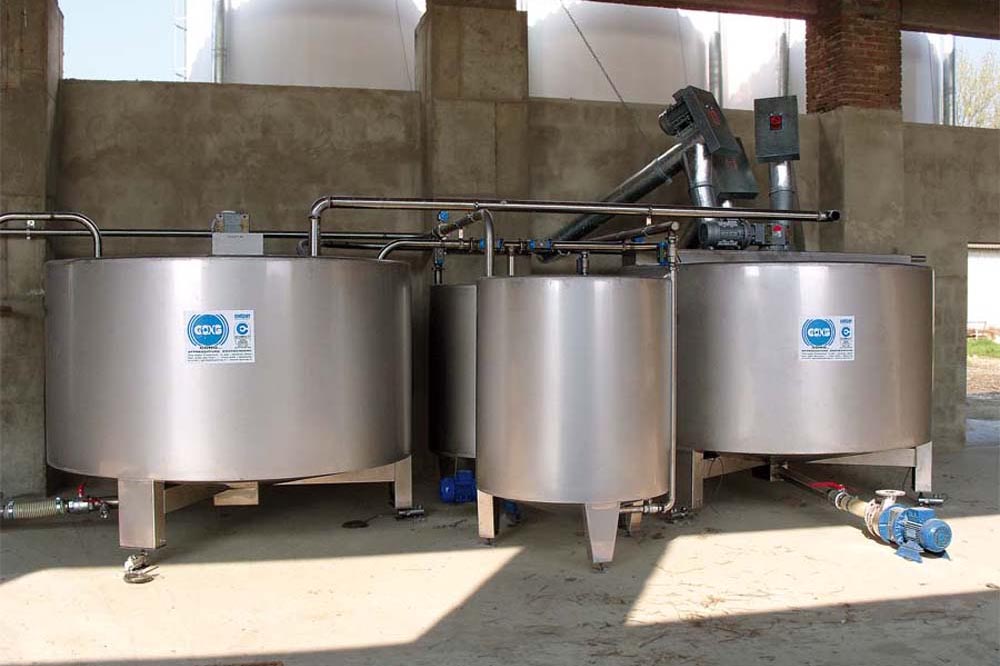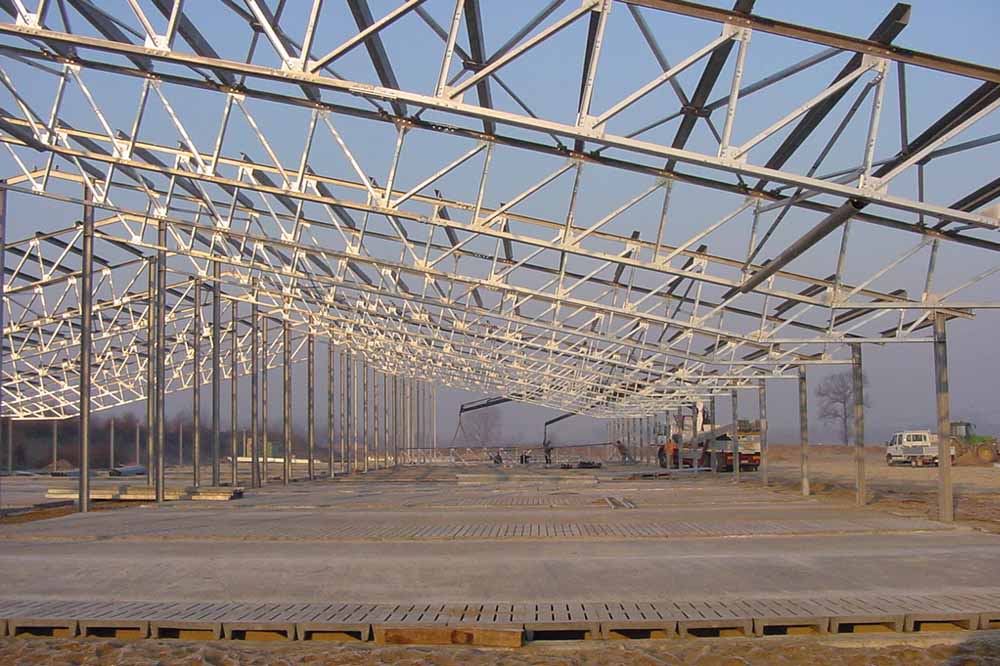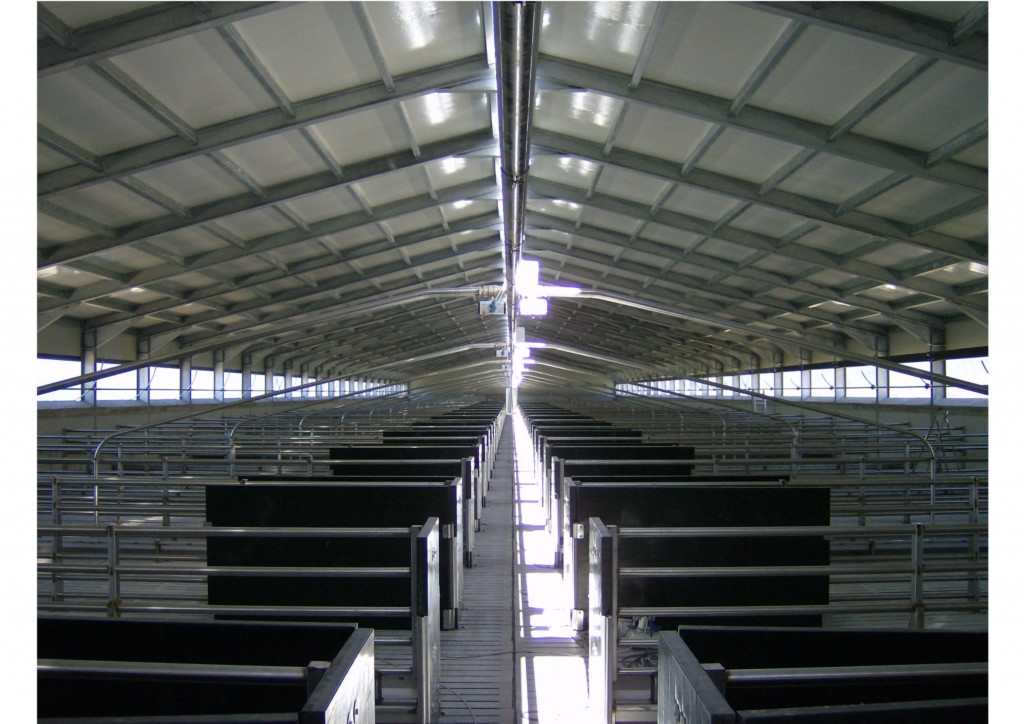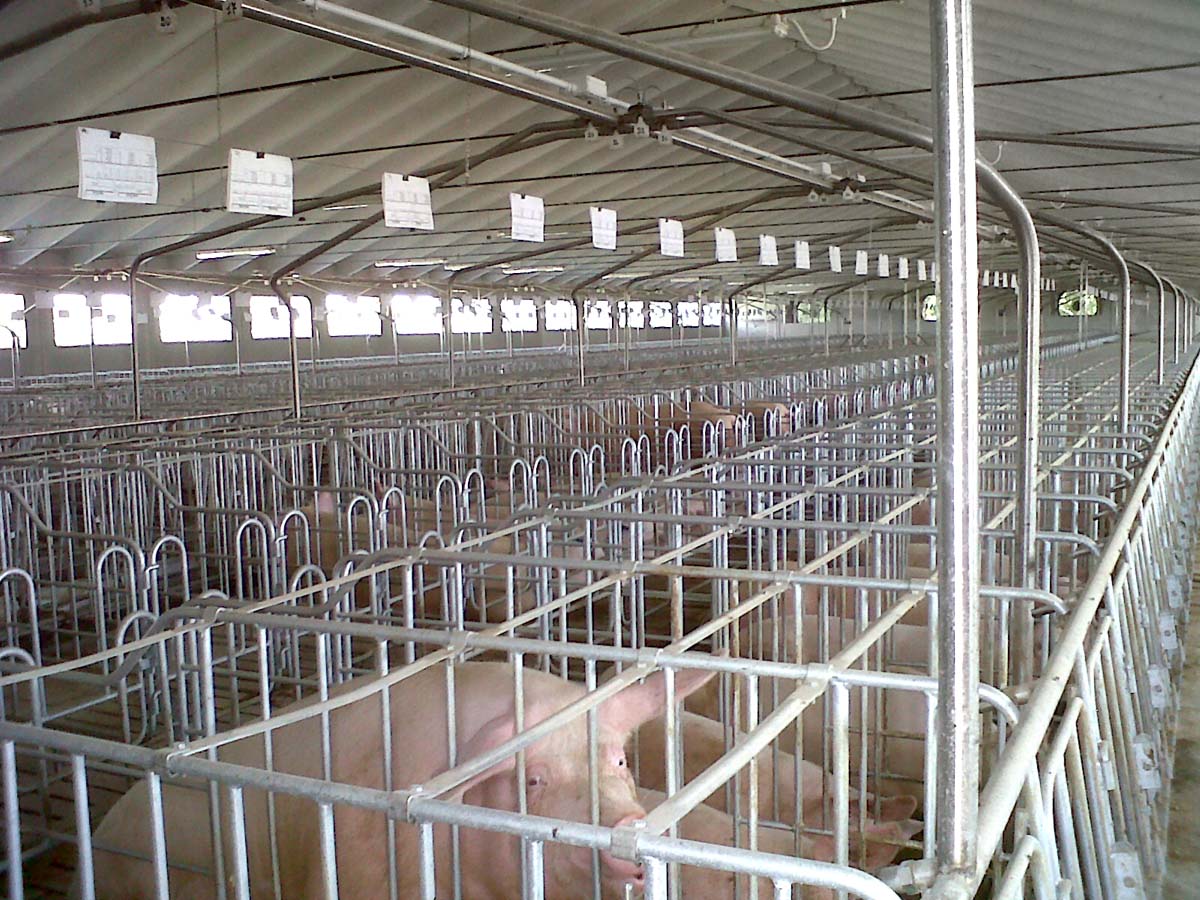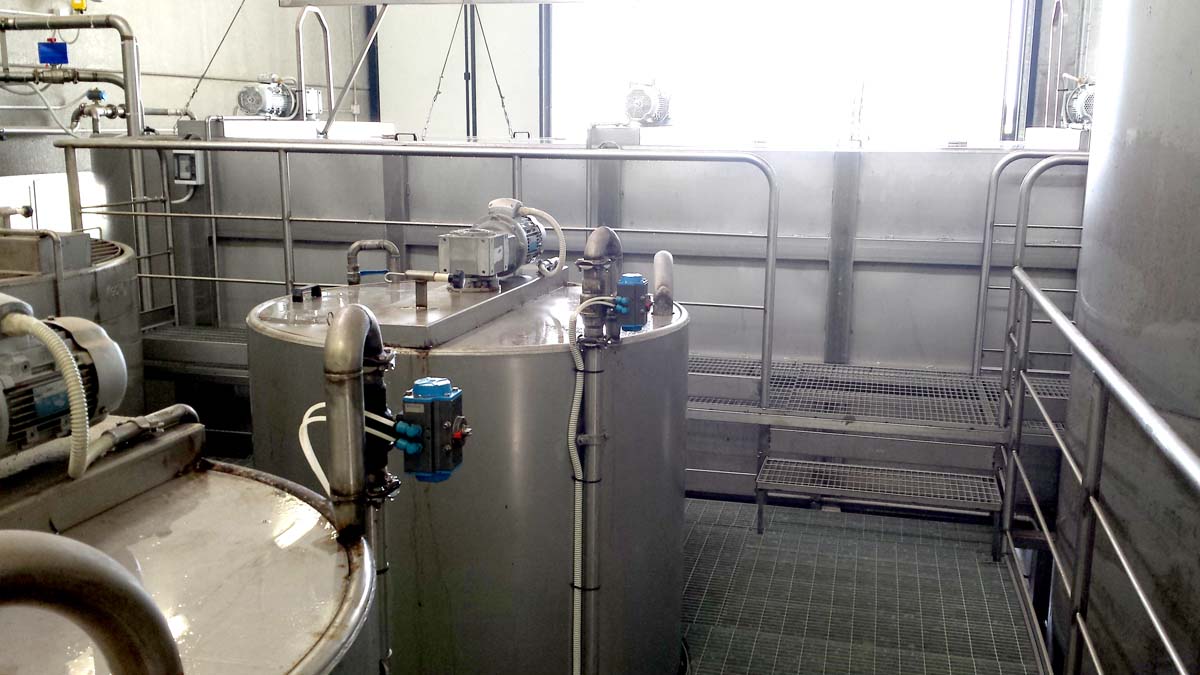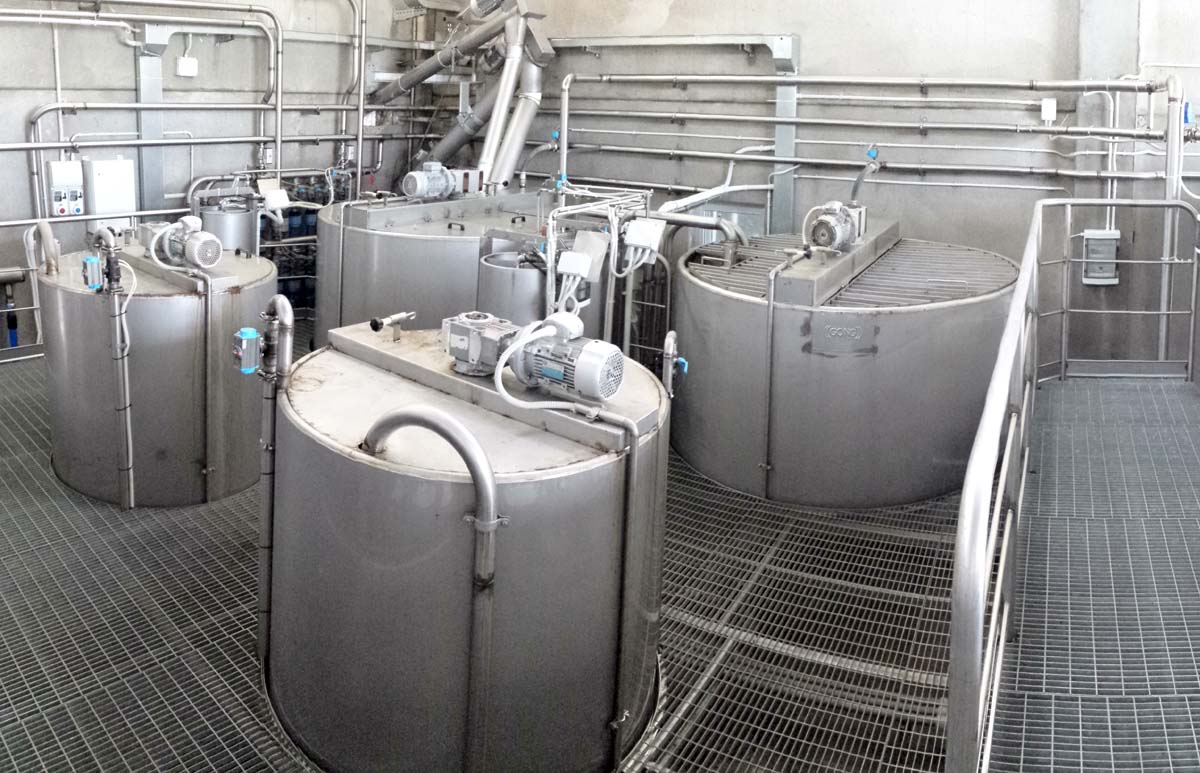Feeding
LIQUID FEEDING
Gong srl is a leader company on the Italian territory in the livestock field. It boasts a 50 year long experience both in the livestock equipment production, and in the computerized liquid feeding system realization.
For more than 50 years, Gong srl has been building computerized feeding systems in Italy and in foreign countries, focusing on the animal welfare and on the different growing phases, from farrowing rooms, to gestation and from weaning to fattening.
In Europe in the last 30 years, the technology at the basis of this system improved, quality and method got much better thanks to the developement of computrized liquid feeding system for pigs.
The pig needs to be fed at least once a day. Either we use the “portioned” feeding or the system “ad libitum”, each pig must be able to reach the feed, together with the rest of the group. The tools and the equipment used to provide and distribute the feeding and the water are designed and installend in order to reduce the risk of pollution of feed and water for the pigs. Besides, the feeding has an important role for the environmental impact, thanks to the possibilty to create a “multi-phase” portioned feeding, that is, adjusted to the animal need.
In this way, in fact, it is possible to reduce the used nitrogen up to 30% and, consequently, to reduce the nitrogen in the manure. To obtain this result it is essential to have plants able to prepare and distribute the feed with particular accuracy. Below we examine the main technical solutions available today
We can provide the feed as follows:
- Portiones, when the number of meal is defined. Normally there are two meals during the day. This method is mostly used in the fattening phase.
- “ad libitum”, that is at will: the feeding is always present in the trough during tha day. This method is mostly used for pigs in the first breeding phases. (weaning, growing-finishing)
The liquid feeding produces many advantages, among them we can find:
- the possibility to use silage feeds and very attractive liquid by-products (whey, molasses, etc..);
- the Feed Conversion Rate improvement, especially in heavy animal (beyond 100 kg);
- a great felxibility in varying the dilution ratio, according to the specific needs of animals;
- It ensures less dust in the barns and less lung diseases.




